Build SaaS MVPs for Passive Revenue: A Practical Guide
Category: Programming
Kickstart Your Passive Income Journey by Building SaaS MVPs
As a tech-savvy programmer or developer, you're no stranger to the world of coding and software development. Yet, finding the right path to monetize your skills passively can be challenging. Perhaps you've experimented with various side projects, but none have translated into sustainable income streams. Maybe you've heard about SaaS MVPs (Minimum Viable Products) as a lucrative avenue, but the idea of building, launching, and scaling one feels overwhelming or unclear. You landed here because you want actionable, clear guidance to transform your programming expertise into a hands-off revenue generator.
This blog post is tailored precisely for you—developers eager to leverage creative programming ideas to build SaaS MVPs that can generate passive revenue. Unlike generic advice scattered across the web, this guide walks you through each stage, from validating your idea to automating your SaaS business, ensuring you avoid common pitfalls and build a product that people will pay for without demanding constant hands-on management. We'll dive deep into the unique challenges of SaaS MVP creation and how to overcome them effectively. By the end, you’ll not only understand how to build a SaaS MVP but also how to set it up as a passive income stream that grows over time. Ready to turn code into cash? Let’s get started.
- Kickstart Your Passive Income Journey by Building SaaS MVPs
- Understanding SaaS MVPs: Definition, Importance, and Their Role in Passive Income Strategies
- Identifying Profitable SaaS Ideas: Techniques to Validate Market Demand, Competition, and Niche Targeting
- Designing a Lean MVP Architecture: Selecting Tech Stacks, Cloud Services, and Modular Design for Minimal Upfront Work
- Rapid Development Techniques: Leveraging Frameworks, No-Code/Low-Code Tools, and APIs to Speed Up MVP Build Time
- Implementing Essential Features Only: How to Prioritize Must-Have Functionalities That Solve Real User Problems
- Automating User Acquisition and Onboarding: Strategies to Streamline Sign-Ups, User Engagement, and Minimize Manual Marketing
- Setting Up Recurring Revenue Models: Pricing Strategies, Subscription Plans, and Upsell Opportunities Tailored for SaaS MVPs
- Monitoring and Iterating Post-Launch: Tools and Best Practices for Collecting User Feedback and Releasing Updates with Minimal Effort
- Scaling with Minimal Maintenance: Using Cloud Automation, Third-Party Integrations, and Outsourcing to Reduce Workload
- Legal, Security, and Compliance Considerations: Ensuring Your SaaS MVP Is Secure, GDPR-Compliant, and Protected Legally While Earning Passively
Understanding SaaS MVPs: Definition, Importance, and Their Role in Passive Income Strategies
Before diving into building your first SaaS MVP, it’s essential to understand what a SaaS MVP really is and why it plays a critical role in generating passive income. A SaaS MVP (Minimum Viable Product) is the most basic, functional version of a software-as-a-service product designed to solve a specific problem for a niche audience with minimal features. Instead of launching a fully-featured platform, you focus on core functionalities that address your users’ pain points, enabling quicker development, faster market entry, and invaluable early feedback.
The importance of a well-crafted SaaS MVP in passive income strategies cannot be overstated. By validating your idea early with a lean product, you reduce the risk of investing time and resources into features your market doesn’t need. This approach accelerates your path to building an automated revenue stream, as it allows you to iterate based on real user data and optimize customer acquisition and retention with minimal ongoing support. Ultimately, a SaaS MVP acts as the foundation for scaling a passive income business: it’s not just about launching quickly but setting up an adaptable product that can generate consistent subscription revenue without constant manual intervention.
Incorporating a SaaS MVP into your passive income strategy means focusing on:
- Targeted problem-solving – Create a product that solves a clear, specific problem.
- Lean development – Build only essential features to test your market hypothesis.
- Early user feedback loops – Use customer insights to refine and improve efficiently.
- Automation potential – Design your MVP for easy onboarding, billing, and support workflows.
Understanding this framework ensures you don’t just build software—you build a sustainable passive income engine that leverages your coding skills effectively.

Image courtesy of ThisIsEngineering
Identifying Profitable SaaS Ideas: Techniques to Validate Market Demand, Competition, and Niche Targeting
The cornerstone of building a successful SaaS MVP that generates passive revenue lies in identifying truly profitable ideas. Without validating your concept against real market demand and competition, you risk spending time and resources on a product that may never attract paying customers. To build a sustainable SaaS passive income stream, you need a structured approach to idea validation that combines market research, competitive analysis, and precise niche targeting.
1. Validate Market Demand with Quantitative and Qualitative Research
Start by exploring whether there’s a strong, existing need for your solution. Use tools like Google Trends, keyword research platforms (e.g., Ahrefs, SEMrush), and online forums (Reddit, niche Facebook groups) to gauge how many people are actively searching for or discussing the problem your SaaS aims to solve. Look for:
- Consistent search volume for relevant keywords indicating ongoing interest
- Active discussions or complaints highlighting pain points
- Existing solutions with user feedback expressing unmet needs or feature gaps
Qualitative validation involves directly interacting with potential users via surveys, interviews, or landing pages that describe your MVP concept to measure interest and collect early sign-ups.
2. Analyze Competition to Find Gaps and Opportunities
Studying competitors lets you understand existing market dynamics and identify where your SaaS MVP can stand out. Analyze their pricing models, feature sets, customer reviews, and marketing tactics. Ask:
- Are competitors addressing all pain points effectively, or do customers express dissatisfaction?
- Is there an underserved sub-niche or user segment they overlook?
- Can you offer a simpler, more affordable, or more automated solution to gain traction?
Competitive analysis can also inspire innovative feature prioritization, allowing you to build a leaner MVP focused on the most impactful functionalities that convert users into paying customers quickly.
3. Target a Specific Niche for Higher Conversion and Reduced Churn
Pinpointing a well-defined niche sharpens your marketing focus and reduces competition. A targeted niche allows you to:
- Tailor messaging to resonate deeply with the unique language and pain points of your audience
- Build stronger community ties that foster word-of-mouth growth and referrals
- Minimize customer support complexity by addressing a consistent set of user needs
Successful SaaS MVPs often thrive by dominating a narrow niche before expanding later, establishing a loyal user base and steady subscription revenue from day one.
By combining data-driven market validation, insightful competitive research, and strategic niche selection, you increase your chances of building a SaaS MVP that not only launches faster but also converts users effectively, setting the foundation for scalable passive income.
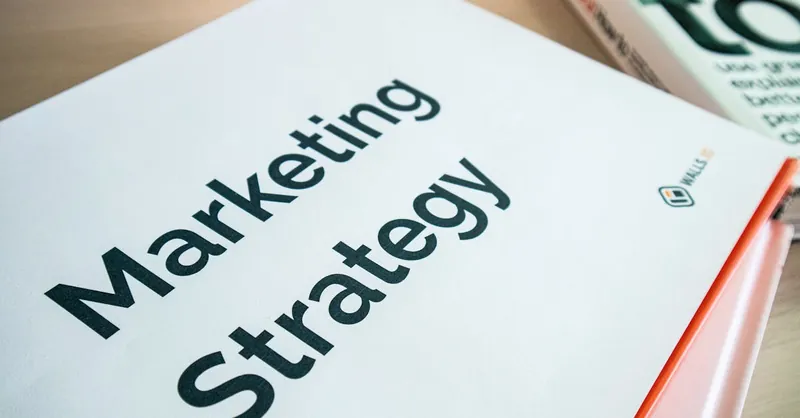
Image courtesy of Walls.io
Designing a Lean MVP Architecture: Selecting Tech Stacks, Cloud Services, and Modular Design for Minimal Upfront Work
Creating a lean and scalable architecture for your SaaS MVP is crucial to minimize development time, reduce costs, and streamline future iterations. When designing your MVP’s technical foundation, focus on simplicity, flexibility, and automation readiness to ensure a fast time-to-market that supports passive revenue growth.
1. Choose the Right Tech Stack for Rapid Development and Maintenance
Opt for technologies that allow you to build and deploy quickly without sacrificing reliability. Popular MVP-friendly stacks often include:
- Backend frameworks like Node.js (Express), Python (Django, Flask), or Ruby on Rails that enable rapid prototyping with vast community support
- Frontend technologies such as React, Vue.js, or Angular offering component-based, reusable UI that accelerates development and future enhancements
- Databases like PostgreSQL or MongoDB that can easily scale as your user base grows, with minimal schema restrictions for MVP flexibility
Prioritize frameworks and languages you are already proficient in to avoid steep learning curves that delay launch. Additionally, lean on managed services and platform-as-a-service (PaaS) solutions to reduce infrastructure overhead.
2. Leverage Cloud Services to Automate Infrastructure and Scale Elastically
Cloud platforms such as AWS, Google Cloud Platform, and Microsoft Azure provide powerful, pay-as-you-go services tailored for SaaS MVP needs:
- Use serverless computing (e.g., AWS Lambda, Google Cloud Functions) to handle backend logic without managing servers, cutting costs and scaling automatically with demand
- Implement managed databases (Amazon RDS, Firebase, Cosmos DB) to offload backups, updates, and scaling complexities
- Employ cloud storage for static assets with CDNs to optimize performance worldwide
Cloud-based CI/CD pipelines and monitoring tools help automate deployments and ensure your MVP maintains uptime with minimal manual intervention—key for passive income sustainability.
3. Adopt Modular and Component-Based Architecture for Easy Iteration
Design your MVP with modularity in mind to simplify feature additions, bug fixes, and refactoring without extensive rework. This approach means:
- Breaking down functionalities into independent, reusable components or microservices
- Defining clear API contracts to allow parallel development and integration of new features
- Isolating critical business logic from UI layers for easier testing and maintenance
A modular design not only accelerates initial MVP delivery but also supports scalable growth and automation, crucial when transitioning your SaaS from MVP to a reliable passive income business.
By strategically selecting your tech stack, leveraging cloud-managed services, and embracing a modular architecture, you ensure your SaaS MVP is built with efficiency and scalability in mind. This lean foundation minimizes upfront work and technical debt, freeing you to focus on customer acquisition and automating your revenue streams—core pillars of successful passive SaaS ventures.

Image courtesy of Christina Morillo
Rapid Development Techniques: Leveraging Frameworks, No-Code/Low-Code Tools, and APIs to Speed Up MVP Build Time
When building a SaaS MVP aimed at generating passive revenue, rapid development becomes a critical factor—not only to validate your idea faster but also to minimize upfront costs and risks. Leveraging modern frameworks, no-code/low-code platforms, and third-party APIs can dramatically accelerate your MVP’s time-to-market, enabling you to launch quickly, gather user data, and iterate efficiently. This approach also allows you to focus more on product-market fit and automation rather than reinventing common functionalities from scratch.
1. Utilize Proven Development Frameworks for Speed and Scalability
Frameworks such as Ruby on Rails, Django, Laravel, and Node.js with Express offer ready-to-use components and a vast ecosystem of plugins that speed up backend development. On the frontend, libraries like React, Vue.js, or Svelte provide modular UI components that simplify creating intuitive user interfaces. These frameworks reduce boilerplate code and come with built-in features like routing, session management, and security best practices, allowing you to focus on unique value-added features of your SaaS MVP.
2. Embrace No-Code and Low-Code Tools for Rapid Prototyping
If your priority is even faster validation with minimal coding, no-code/low-code platforms such as Bubble, Adalo, Webflow, and Airtable empower programmers and non-technical founders alike to build fully functional SaaS MVPs. These tools support integrations, user authentication, payment collections, and responsive design out of the box. By combining low-code solutions with custom code snippets, you can balance flexibility and speed, trimming weeks or even months off your development timeline.
3. Integrate Third-Party APIs to Outsource Complex Functionalities
Instead of building every feature internally, integrate reliable third-party APIs to incorporate advanced capabilities quickly and cost-effectively. Common API categories include:
- Payment processing (Stripe, PayPal) to handle subscriptions and billing automation
- User authentication and authorization (Auth0, Firebase Authentication) for secure login flows
- Email delivery and marketing automation (SendGrid, Mailchimp) to engage users and onboard efficiently
- Analytics and error monitoring (Google Analytics, Sentry) to track usage and maintain quality effortlessly
API-driven development enhances your SaaS MVP’s feature set without excessive coding, enabling effortless scalability and easier maintenance.
By combining robust development frameworks, no-code/low-code platforms, and strategic API integrations, you enable rapid MVP creation that doesn’t compromise on quality or scalability. This approach not only slashes build times but also aligns perfectly with the goal of launching a lean SaaS product that can quickly evolve into a profitable, automated passive income stream.
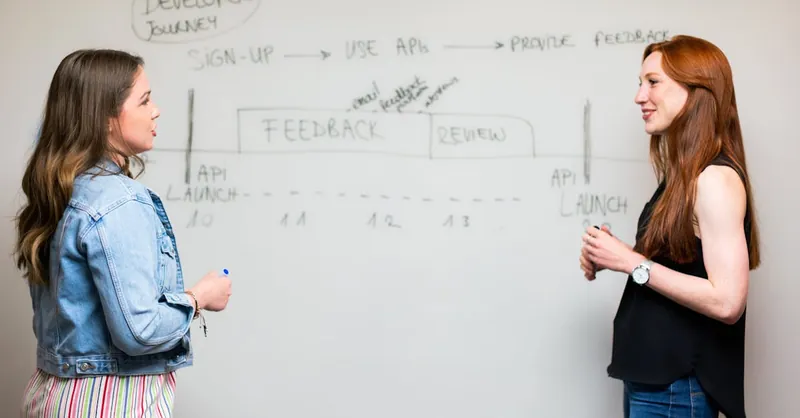
Image courtesy of ThisIsEngineering
Implementing Essential Features Only: How to Prioritize Must-Have Functionalities That Solve Real User Problems
When building your SaaS MVP, the key to launching a successful product quickly and efficiently lies in prioritizing essential features that directly address your users’ most pressing problems. Avoid the temptation to build a fully loaded product from day one—this often leads to bloated software, delayed launches, and wasted resources on functionalities that customers might never use. Instead, focus on crafting a lean MVP with a clear, compelling value proposition that solves a specific pain point better than existing alternatives.
How to Identify and Prioritize Must-Have Features
-
Focus on Core Problem-Solving:
Prioritize features that solve the fundamental problem your SaaS MVP aims to address. Ask yourself: does this feature contribute to delivering the core value users are seeking? If the answer is no, it likely doesn’t belong in your initial release. -
Use the MoSCoW Method for Feature Prioritization:
Categorize potential features into Must-have, Should-have, Could-have, and Won't-have (this time). This framework keeps your MVP focused strictly on what’s necessary to launch, enabling quicker development and faster validation. -
Validate with User Feedback:
Early user interviews, surveys, and beta testing can provide clarity on which features genuinely solve urgent problems and which are "nice-to-haves". Real user feedback helps prevent assumptions and ensures you build what your audience actually needs. -
Automate and Simplify:
Implement features that can be easily automated or require minimal maintenance to maintain the passive income nature of your SaaS. Avoid complex workflows that demand frequent manual intervention or extensive customer support.
Benefits of Prioritizing Essential Features for Your SaaS MVP
- Faster Time to Market: By limiting your MVP scope to must-have functionalities, you accelerate development and reduce costs, helping you launch sooner and start generating revenue.
- Clear Product-Market Fit Validation: A focused product makes it easier to gauge market interest and prove demand, refining your value proposition without distraction.
- Reduced Technical Debt: Building only essential features upfront means less complexity, easier maintenance, and a smoother path to scale.
- Enhanced User Experience: A simpler, intuitive product that solves real problems keeps early adopters satisfied and boosts retention, fuelling passive income via recurring subscriptions.
By deliberately implementing only the core features that provide immediate, tangible value, you set your SaaS MVP on the path toward profitable, passive revenue—saving time and resources while building a strong foundation for future growth and automation.

Image courtesy of Christina Morillo
Automating User Acquisition and Onboarding: Strategies to Streamline Sign-Ups, User Engagement, and Minimize Manual Marketing
One of the most critical steps in building a SaaS MVP for passive revenue is automating user acquisition and onboarding processes. Without efficient automation, you risk spending countless hours on manual marketing, individually handling sign-ups, and guiding users through your product—activities that directly contradict the goal of passive income. By implementing scalable, automated strategies, you make your MVP a self-sustaining business that continuously attracts, engages, and retains customers with minimal hands-on effort.
1. Automate User Sign-Up and Payment Flows
Simplify the sign-up experience with frictionless registration that requires minimal input and supports multiple authentication methods like email, social logins (Google, Facebook), or passwordless options. Integrate payment gateways such as Stripe or PayPal to automate subscription billing and reduce churn risk by allowing flexible plans and easy cancellations—all handled behind the scenes without manual intervention.
2. Use Email Drip Campaigns and In-App Messaging for Onboarding
Leverage automated email drip sequences to nurture new users from signup through first value realization. Emails can guide users through essential features, offer tips, and highlight benefits, improving early engagement and reducing drop-off rates. Complement email with in-app messaging or tooltips that proactively assist users in onboarding steps right when they interact with your product, creating a seamless first experience that converts trial users into paying customers.
3. Implement Self-Service Resources and Chatbots
Reduce manual support burdens by providing comprehensive self-service documentation, FAQs, and tutorial videos that empower users to solve common issues independently. Additionally, deploying AI-powered chatbots for first-line support can answer typical questions instantly, escalate complex issues only when needed, and collect valuable user feedback for continuous product improvement.
4. Track User Behavior and Optimize Conversion Funnels
Use analytics platforms (e.g., Google Analytics, Mixpanel) to automatically monitor user behavior throughout acquisition and onboarding funnels. Identify key drop-off points and set up automated remarketing campaigns or triggered communications to recapture interested users. This data-driven approach refines your marketing automation and helps optimize user journeys without manual effort.
By embedding automation into every stage of user acquisition and onboarding, you create a smooth, personalized growth engine for your SaaS MVP. This strategic automation minimizes manual marketing workload, maximizes conversions, and fosters long-term customer retention—fundamental drivers of a successful, fully passive SaaS revenue stream.
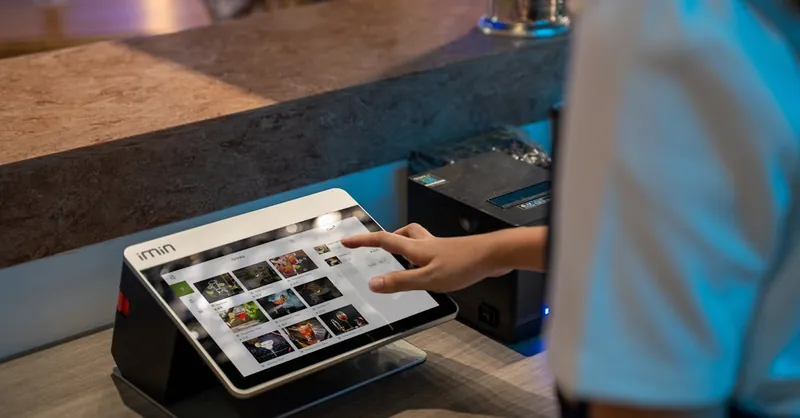
Image courtesy of iMin Technology
Setting Up Recurring Revenue Models: Pricing Strategies, Subscription Plans, and Upsell Opportunities Tailored for SaaS MVPs
Establishing effective recurring revenue models is a cornerstone of building a monetizable SaaS MVP that delivers passive income reliably over time. Unlike one-time sales, recurring revenue—primarily through subscriptions—creates a predictable cash flow and fosters long-term customer relationships. To optimize this revenue stream, it’s crucial to implement pricing strategies and subscription plans specifically crafted for your SaaS MVP’s target audience, while also designing upsell and cross-sell opportunities that naturally increase customer lifetime value without adding manual complexity.
Crafting Pricing Strategies Designed for SaaS MVPs
-
Value-Based Pricing Over Cost-Plus:
Set your SaaS MVP pricing based on the tangible value your software delivers to users, not just development or operational costs. Evaluate how much time, effort, or money your product helps customers save or earn, and price accordingly to capture that economic benefit. -
Tiered Subscription Plans for Different User Segments:
Offer multiple subscription tiers that align with user needs and willingness to pay. Commonly, a basic/free tier introduces users to core features, while premium tiers unlock advanced functionalities, higher usage limits, or priority support. This segmentation: - Attracts a wider audience
- Encourages upgrades as customers grow
-
Helps maximize revenue per user
-
Transparent and Flexible Pricing Models:
Emphasize clear pricing with monthly and annual payment options, offering discounts for longer commitments to improve cash flow predictability. Transparency fosters trust and reduces churn caused by pricing confusion or unexpected charges.
Designing Subscription Plans That Encourage Commitment and Retention
-
Freemium or Trial Periods: Effective SaaS MVPs often provide free trials or freemium access to remove barriers to adoption while demonstrating value upfront. Seamless upgrade flows convert trial users into paying subscribers with minimal friction.
-
Feature Locking and Usage Caps: Restrict advanced features or higher usage limits to paid plans. For instance, the number of seats, projects, or API calls can serve as natural boundaries that entice users to upgrade as they scale.
-
Automated Subscription Management: Integrate billing platforms like Stripe Billing or Chargebee that manage recurring payments, invoicing, and dunning automatically, minimizing manual revenue operations while maintaining smooth customer experiences.
Leveraging Upsell and Cross-Sell Opportunities to Maximize Revenue
To grow passive revenue beyond initial subscriptions, build thoughtfully designed upsell paths and add-on purchases within your SaaS MVP. Examples include:
- Feature Add-Ons: Sell premium capabilities like enhanced analytics, integrations, or customization options as optional extras users can activate anytime.
- Higher Service Levels: Offer priority customer support, onboarding consultations, or SLA guarantees as upgradeable packages.
- Usage-Based Billing: Incorporate metered billing for resource-heavy features, allowing users to pay only for what they consume, which scales revenue proportionally with user growth.
By embedding these upsell opportunities naturally into the user interface—such as through in-app prompts or personalized emails—you create revenue expansion opportunities without increasing your workload, preserving the passive income essence.
Implementing a well-structured, customer-centric recurring revenue model tailored specifically for your SaaS MVP sets the foundation for sustainable, scalable passive income. Thoughtful pricing, tiered subscription plans, and automated billing complemented with strategic upsells not only maximize revenue but also enhance user satisfaction and retention—key pillars for long-term SaaS success and truly passive monetization.
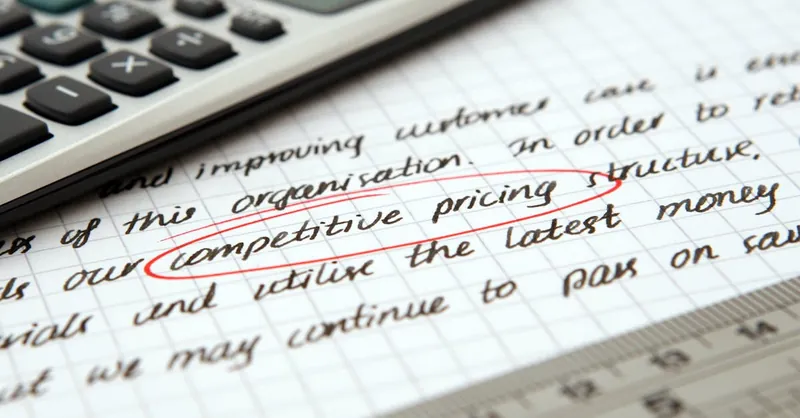
Image courtesy of Pixabay
Monitoring and Iterating Post-Launch: Tools and Best Practices for Collecting User Feedback and Releasing Updates with Minimal Effort
Launching your SaaS MVP is just the beginning of your journey toward building a sustainable passive revenue stream. Continuous monitoring and iterative improvements based on real user feedback are essential to refine your product, fix issues promptly, and introduce valuable features that keep customers engaged and subscribed. However, to maintain the passive nature of your SaaS business, you need to implement efficient feedback collection and update deployment processes that require minimal manual intervention.
Best Practices for Collecting Actionable User Feedback Efficiently
-
Integrate In-App Feedback Mechanisms:
Embed lightweight tools such as feedback widgets, quick surveys, or Net Promoter Score (NPS) prompts directly within your app. This real-time feedback capture reduces friction for users and provides valuable insights into satisfaction and feature requests without interrupting their workflow. -
Leverage Analytics and User Behavior Tracking:
Utilize platforms like Google Analytics, Mixpanel, or Hotjar to automatically analyze how users interact with your SaaS MVP, identify friction points, and detect drop-off scenarios. This data-driven approach uncovers usability issues and guides prioritization of fixes and enhancements aligned with actual user behavior rather than assumptions. -
Automate Customer Support and Ticketing:
Implement support tools with built-in automation capabilities such as Zendesk, Freshdesk, or Intercom to triage customer issues, gather feedback, and route critical bugs or feature requests directly into your development pipeline. Automated tagging and prioritization reduce your manual workload and ensure timely responses.
Releasing Updates with Minimal Effort Using DevOps and Deployment Automation
To keep your SaaS MVP competitive and maintain passive revenue momentum, rapid but low-effort update cycles are vital. Employ the following strategies:
-
Setup Continuous Integration/Continuous Deployment (CI/CD) Pipelines:
Automate your build, test, and deployment processes using tools like GitHub Actions, CircleCI, or Jenkins. CI/CD pipelines minimize human intervention, ensure consistent code quality, and enable frequent, reliable releases—keeping your SaaS responsive to user needs without downtime or delays. -
Utilize Feature Flags and Gradual Rollouts:
Deploy new features behind feature flags using tools such as LaunchDarkly or Firebase Remote Config, allowing you to release updates selectively to small user groups before full rollout. This reduces risk, enables A/B testing of new functionalities, and accelerates feedback-driven iteration. -
Maintain Robust Monitoring and Alerting:
Integrate application performance monitoring (APM) and error tracking solutions like New Relic, Datadog, or Sentry to automatically detect issues post-deployment. Automated alerts enable rapid responses to bugs or regressions, minimizing downtime and customer impact.
By combining automated feedback loops, analytics-driven insights, and DevOps best practices, you create a lean post-launch workflow that empowers continuous improvement of your SaaS MVP with minimal ongoing effort. This efficient iterative process not only enhances user satisfaction and retention but also solidifies your product’s passive income potential by reducing manual maintenance and support burdens.
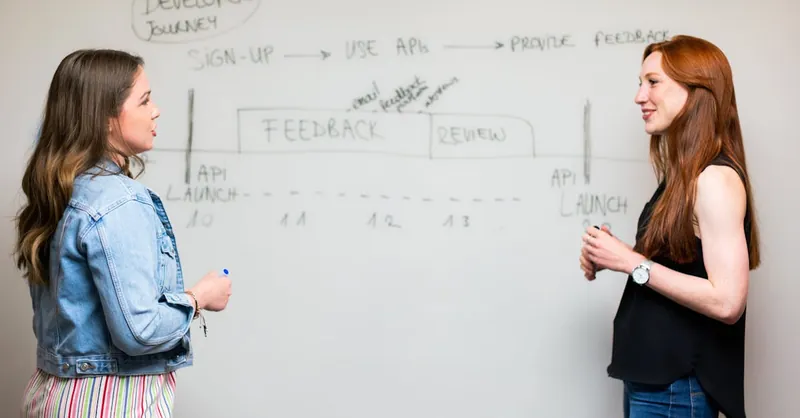
Image courtesy of ThisIsEngineering
Scaling with Minimal Maintenance: Using Cloud Automation, Third-Party Integrations, and Outsourcing to Reduce Workload
Scaling your SaaS MVP into a reliable passive income source requires smart strategies that minimize ongoing maintenance and operational overhead. Leveraging cloud automation, third-party integrations, and strategic outsourcing empowers you to grow your user base and revenue without scaling your personal workload proportionally—key to maintaining a truly passive SaaS business.
Harness Cloud Automation to Streamline Operations
Cloud platforms like AWS, Google Cloud, and Azure offer robust automation tools that handle infrastructure scaling, backups, security updates, and performance monitoring automatically. By setting up auto-scaling groups, serverless functions, and managed database services, your SaaS MVP can effortlessly accommodate growing traffic and data volumes without manual intervention. Additionally, automating tasks such as user onboarding, billing, and email notifications through cloud workflows or third-party automation tools (like Zapier or Integromat) significantly reduces repetitive tasks, freeing you to focus on strategic growth.
Integrate Third-Party Services to Offload Complex Functionality
Incorporating well-established third-party APIs and SaaS solutions not only accelerates scaling but also offloads maintenance responsibility. Examples include:
- Payment processing and subscription management (Stripe, Paddle) that handle recurring billing and compliance automatically
- Customer support platforms with chatbot automation (Intercom, Drift) to triage and solve user issues without direct human involvement
- Marketing automation tools (Mailchimp, HubSpot) that nurture leads and maintain engagement with minimal manual input
By relying on these integrations, your SaaS MVP benefits from enterprise-grade reliability and feature improvements without your active management.
Outsource Non-Core Activities to Trusted Partners
To maintain lean day-to-day operations, outsource time-consuming tasks such as customer support, content creation, and routine QA testing to freelancers, virtual assistants, or specialized agencies. Platforms like Upwork or Fiverr enable you to find affordable professionals skilled in handling these responsibilities at scale, allowing you to focus on product strategy and high-impact development. Combining outsourcing with clear processes and automation ensures your SaaS MVP scales smoothly without becoming a full-time job.
By strategically embedding cloud automation, third-party integrations, and outsourcing into your scaling approach, you build a SaaS MVP infrastructure that grows while your manual workload stays minimal. This scalable, low-maintenance model is essential for converting your development efforts into a sustainable, automated passive income stream that continues delivering returns with little direct involvement.
Image courtesy of RealToughCandy.com
Legal, Security, and Compliance Considerations: Ensuring Your SaaS MVP Is Secure, GDPR-Compliant, and Protected Legally While Earning Passively
When building a SaaS MVP designed for passive revenue, addressing legal, security, and compliance issues from the outset is crucial—not only to protect your users but also to safeguard your business and ensure long-term sustainability. Ignoring these aspects can lead to hefty fines, reputational damage, or even platform shutdowns, all of which undermine your goal of earning hands-free income. Incorporating legal and security best practices early on provides peace of mind, builds customer trust, and helps your SaaS MVP scale compliantly in a global market.
Key Legal Considerations for SaaS MVPs
-
Draft Clear Terms of Service and Privacy Policies:
Your MVP must include well-crafted Terms of Service (ToS) and Privacy Policies that transparently outline user rights, data usage, subscription terms, and liability disclaimers. These legal documents protect you from disputes and clarify expectations, especially around cancellation, refunds, and acceptable use policies. -
Ensure GDPR and Data Protection Compliance:
If your SaaS MVP collects, processes, or stores personal data of users within the European Union, General Data Protection Regulation (GDPR) compliance is mandatory. Key compliance steps include obtaining explicit consent for data collection, enabling users’ right to access or delete data, and securing data transfers. Even if targeting global users, adopting GDPR standards elevates your data privacy credibility universally. -
Intellectual Property (IP) Protection:
Safeguard your code, branding, and unique features by leveraging IP protections such as copyrights, trademarks, or patents when applicable. Properly licensing third-party libraries and APIs used also prevents legal risks and maintains your SaaS’s integrity.
Essential Security Measures to Protect Your SaaS MVP
-
Implement Secure Authentication and Authorization: Use proven frameworks and services for user authentication (e.g., OAuth 2.0, JWT tokens) and enforce strong password policies, multifactor authentication (MFA), and role-based access control (RBAC) to reduce unauthorized access risks.
-
Encrypt Sensitive Data: Both at rest and transit, utilize encryption standards like TLS/SSL for data transmissions and database encryption for stored user information to prevent data breaches.
-
Regular Security Audits and Penetration Testing: Schedule regular internal and third-party security assessments to identify vulnerabilities early. This proactive approach mitigates risks before exploits can cause damage.
-
Data Backup and Disaster Recovery Planning: Implement automated backups and clear recovery protocols to avoid data loss and quickly restore services after incidents, ensuring uptime critical to your passive revenue flows.
Compliance Automation and Ongoing Legal Maintenance
Leveraging compliance automation tools and services can ease the burden of meeting evolving regulations. For example, GDPR compliance platforms can automate consent management and data subject requests. Integrate legal monitoring services to stay updated on relevant laws affecting SaaS businesses, helping you adapt policies and practices without intensive manual effort.
By embedding robust legal frameworks, strict security protocols, and proactive compliance measures into your SaaS MVP from day one, you not only protect your users but also fortify your passive income stream against costly disruptions. Prioritizing these considerations enhances customer confidence, drives sustainable growth, and ensures your MVP thrives legally and securely in today’s competitive SaaS landscape.
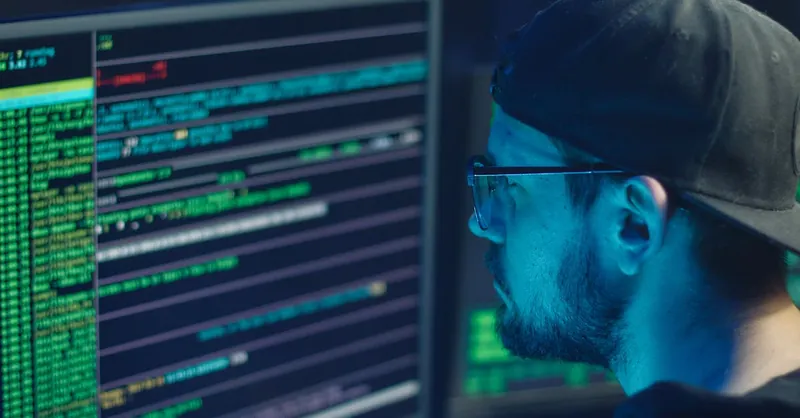
Image courtesy of Mikhail Nilov
